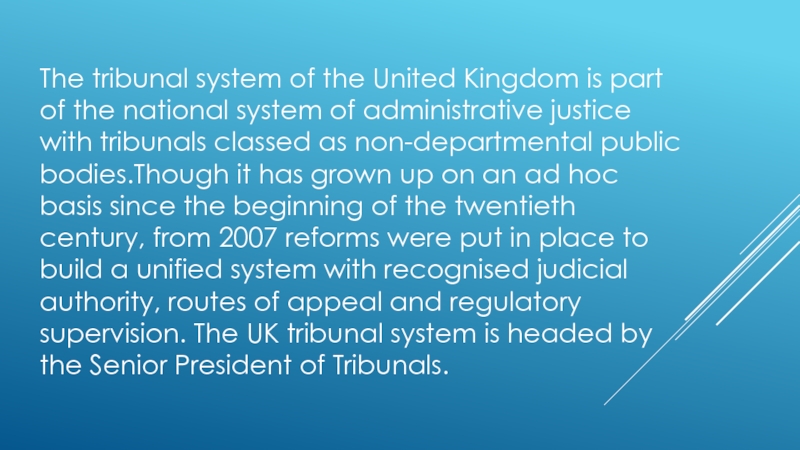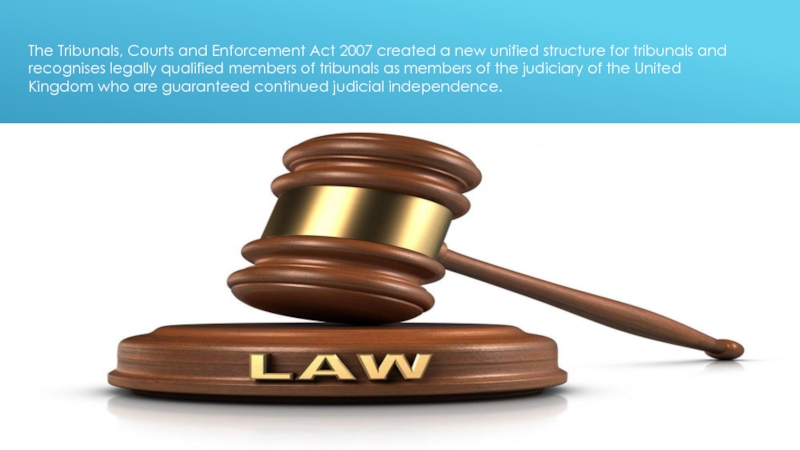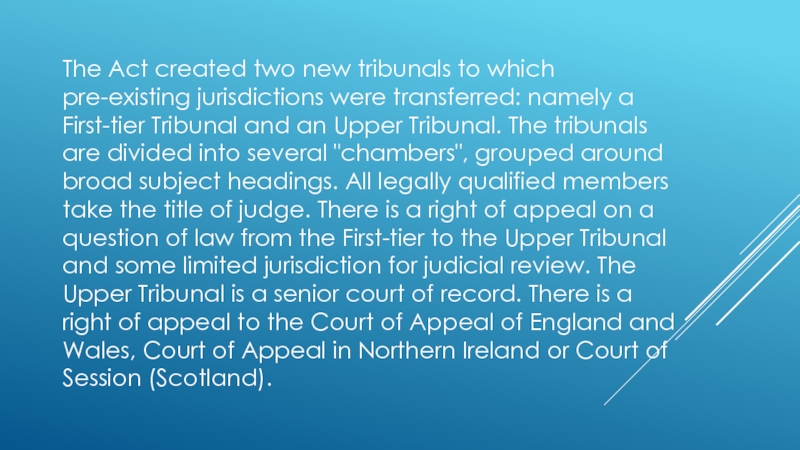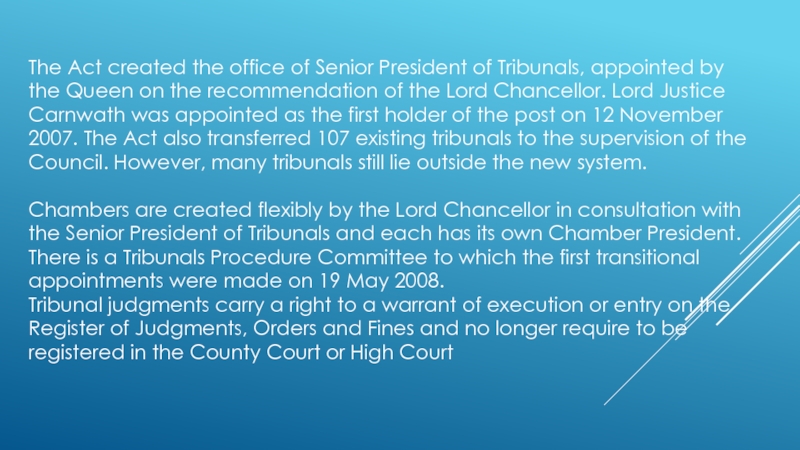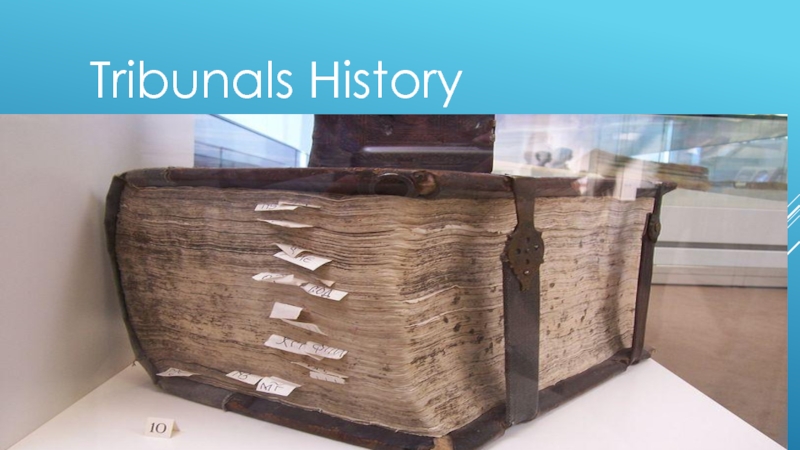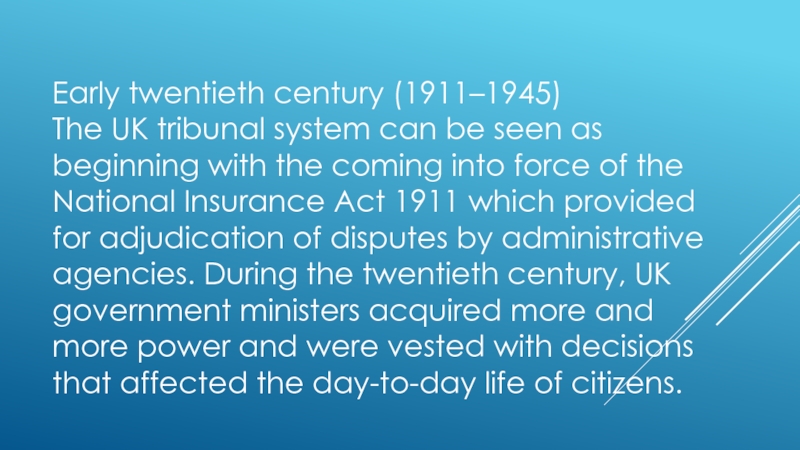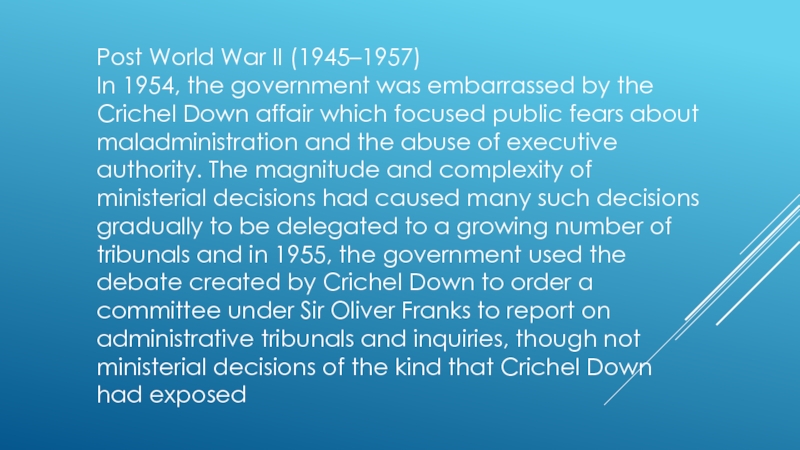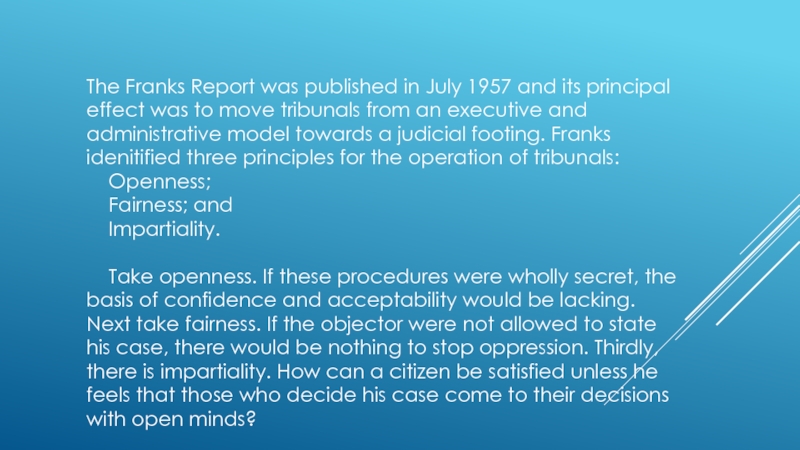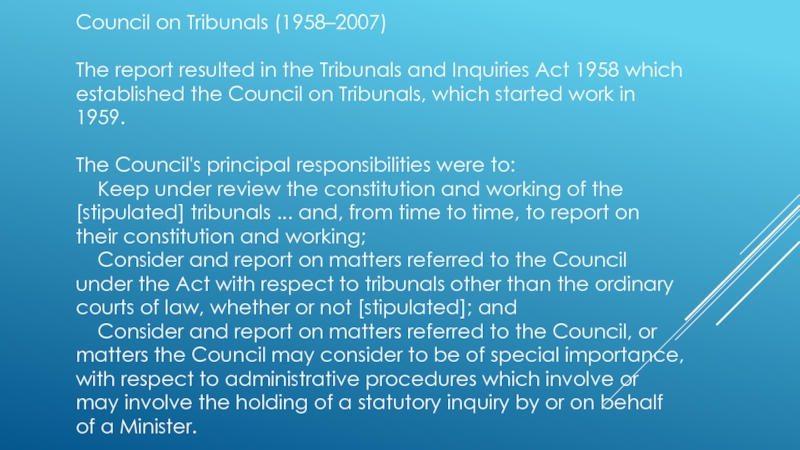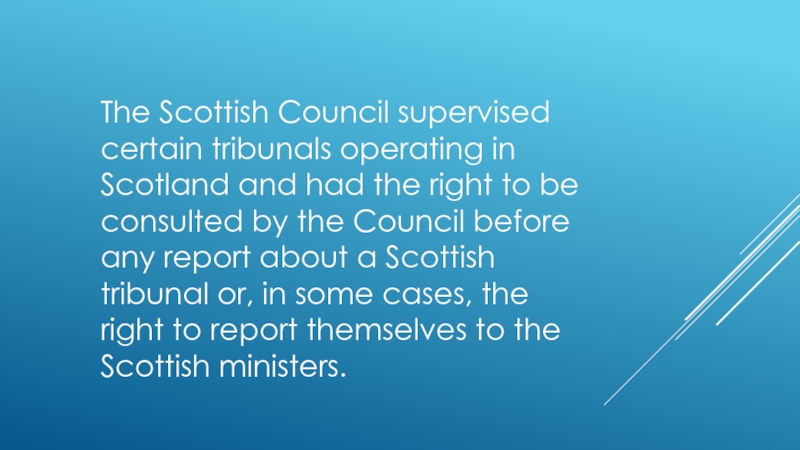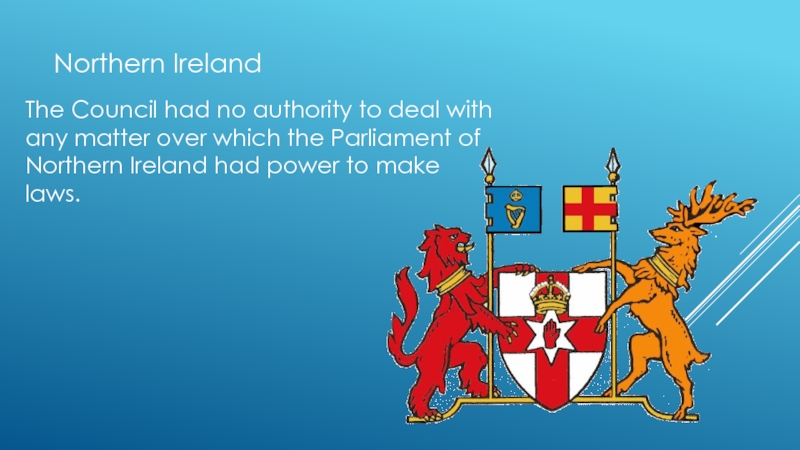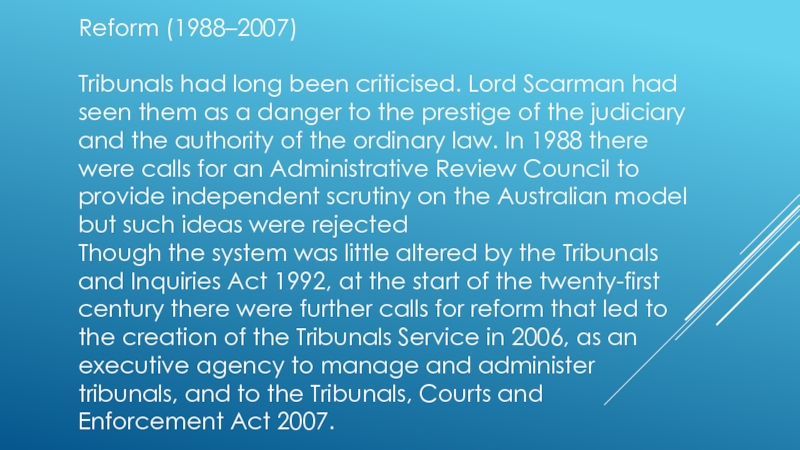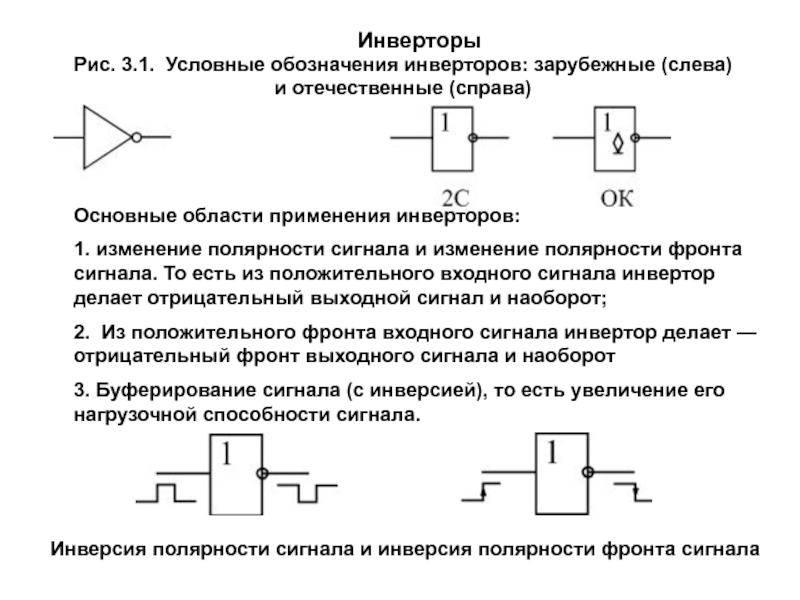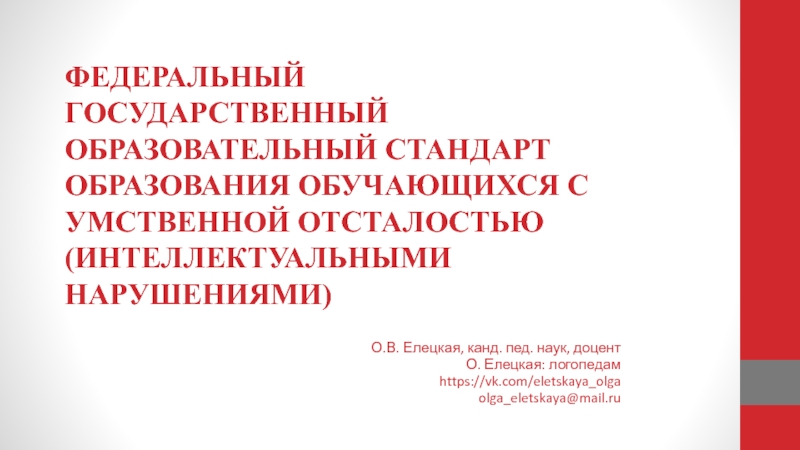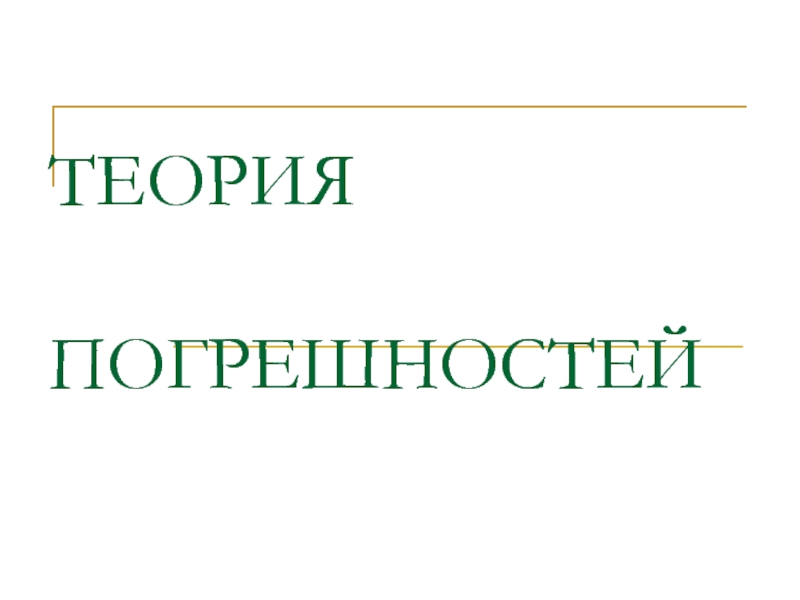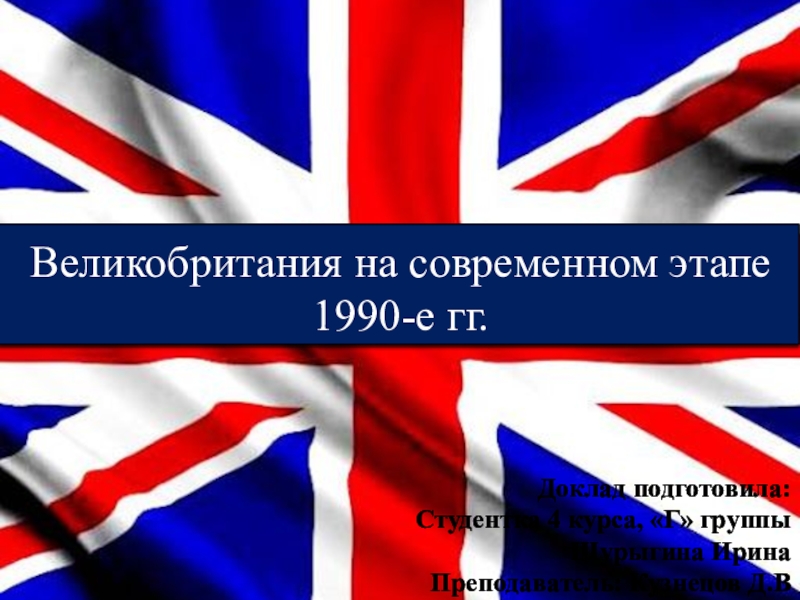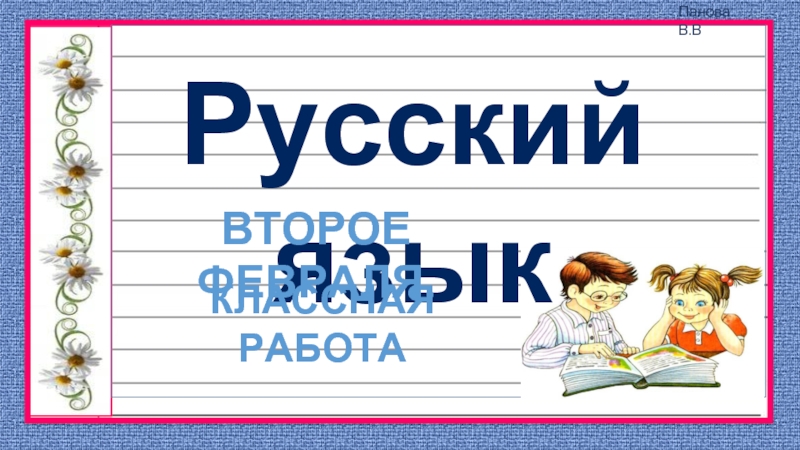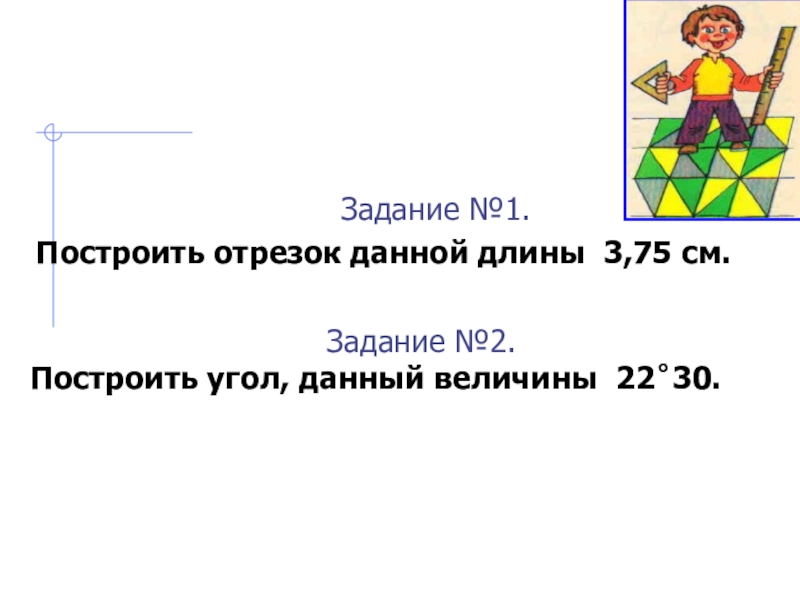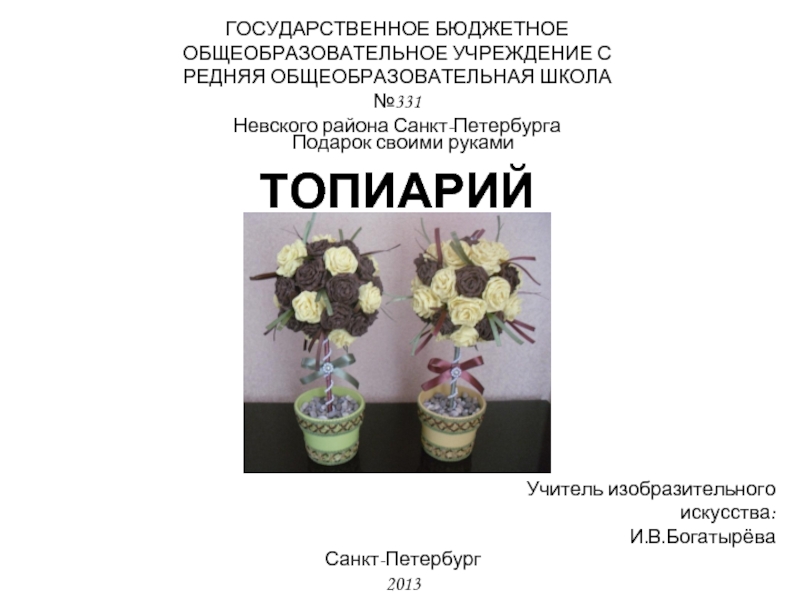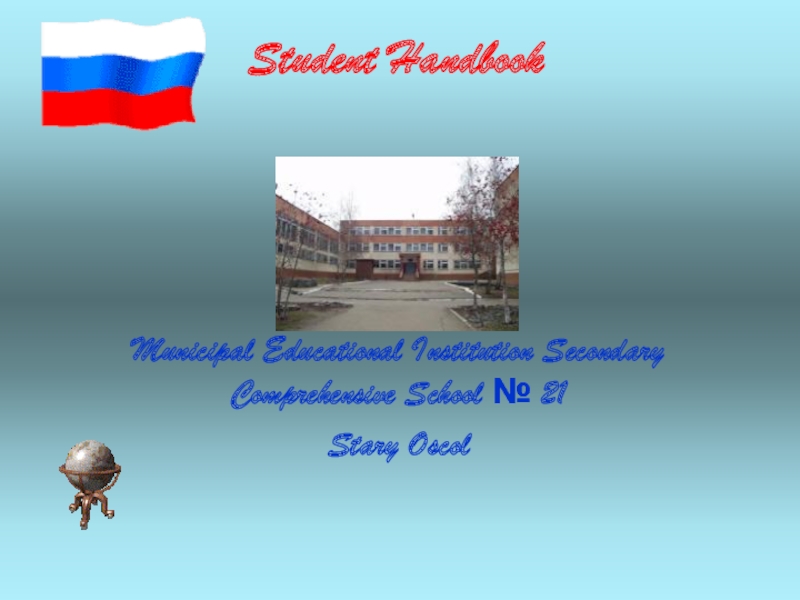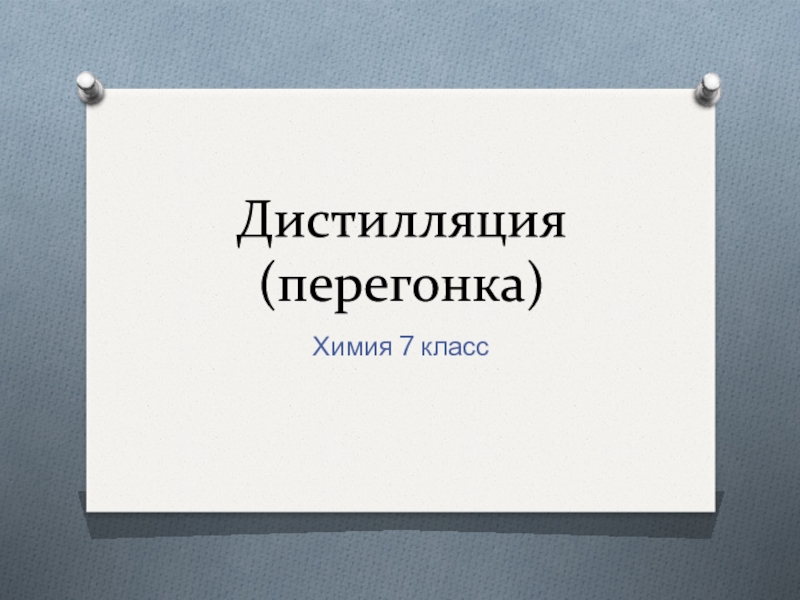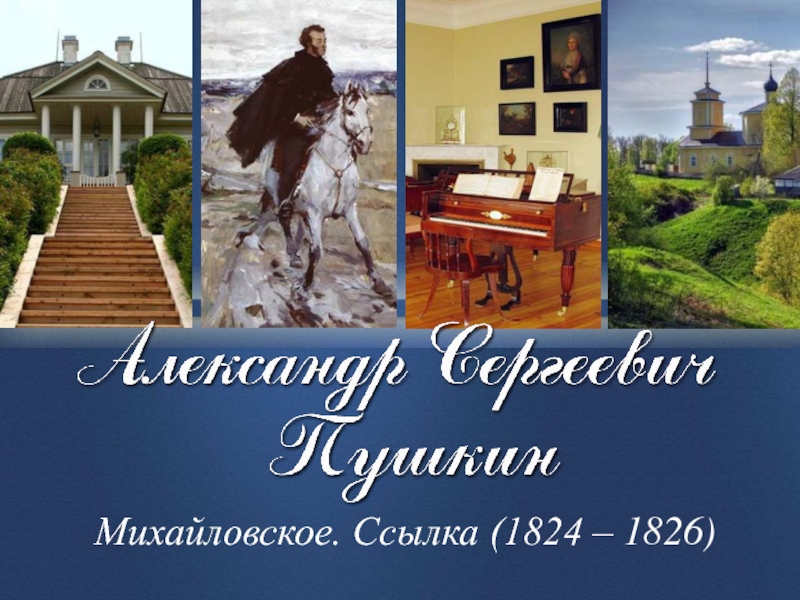Разделы презентаций
- Разное
- Английский язык
- Астрономия
- Алгебра
- Биология
- География
- Геометрия
- Детские презентации
- Информатика
- История
- Литература
- Математика
- Медицина
- Менеджмент
- Музыка
- МХК
- Немецкий язык
- ОБЖ
- Обществознание
- Окружающий мир
- Педагогика
- Русский язык
- Технология
- Физика
- Философия
- Химия
- Шаблоны, картинки для презентаций
- Экология
- Экономика
- Юриспруденция
Tribunal in the UK
Содержание
- 1. Tribunal in the UK
- 2. The tribunal system of the United Kingdom
- 3. The Tribunals, Courts and Enforcement Act 2007
- 4. The Act created two new tribunals to
- 5. The Act created the office of Senior
- 6. Tribunals History
- 7. Early twentieth century (1911–1945)The UK tribunal system
- 8. Post World War II (1945–1957)In 1954, the
- 9. The Franks Report was published in July
- 10. Council on Tribunals (1958–2007)The report resulted in
- 11. Scotland system
- 12. The Scottish Council supervised certain tribunals operating
- 13. Northern IrelandThe Council had no authority to
- 14. Reform (1988–2007)Tribunals had long been criticised. Lord
- 15. Слайд 15
- 16. Скачать презентанцию
The tribunal system of the United Kingdom is part of the national system of administrative justice with tribunals classed as non-departmental public bodies.Though it has grown up on an ad hoc
Слайды и текст этой презентации
Слайд 3The Tribunals, Courts and Enforcement Act 2007 created a new
unified structure for tribunals and recognises legally qualified members of
tribunals as members of the judiciary of the United Kingdom who are guaranteed continued judicial independence.Слайд 4The Act created two new tribunals to which pre-existing jurisdictions
were transferred: namely a First-tier Tribunal and an Upper Tribunal.
The tribunals are divided into several "chambers", grouped around broad subject headings. All legally qualified members take the title of judge. There is a right of appeal on a question of law from the First-tier to the Upper Tribunal and some limited jurisdiction for judicial review. The Upper Tribunal is a senior court of record. There is a right of appeal to the Court of Appeal of England and Wales, Court of Appeal in Northern Ireland or Court of Session (Scotland).Слайд 5The Act created the office of Senior President of Tribunals,
appointed by the Queen on the recommendation of the Lord
Chancellor. Lord Justice Carnwath was appointed as the first holder of the post on 12 November 2007. The Act also transferred 107 existing tribunals to the supervision of the Council. However, many tribunals still lie outside the new system.Chambers are created flexibly by the Lord Chancellor in consultation with the Senior President of Tribunals and each has its own Chamber President. There is a Tribunals Procedure Committee to which the first transitional appointments were made on 19 May 2008.
Tribunal judgments carry a right to a warrant of execution or entry on the Register of Judgments, Orders and Fines and no longer require to be registered in the County Court or High Court
Слайд 7Early twentieth century (1911–1945)
The UK tribunal system can be seen
as beginning with the coming into force of the National
Insurance Act 1911 which provided for adjudication of disputes by administrative agencies. During the twentieth century, UK government ministers acquired more and more power and were vested with decisions that affected the day-to-day life of citizens.Слайд 8Post World War II (1945–1957)
In 1954, the government was embarrassed
by the Crichel Down affair which focused public fears about
maladministration and the abuse of executive authority. The magnitude and complexity of ministerial decisions had caused many such decisions gradually to be delegated to a growing number of tribunals and in 1955, the government used the debate created by Crichel Down to order a committee under Sir Oliver Franks to report on administrative tribunals and inquiries, though not ministerial decisions of the kind that Crichel Down had exposedСлайд 9The Franks Report was published in July 1957 and its
principal effect was to move tribunals from an executive and
administrative model towards a judicial footing. Franks idenitified three principles for the operation of tribunals:Openness;
Fairness; and
Impartiality.
Take openness. If these procedures were wholly secret, the basis of confidence and acceptability would be lacking. Next take fairness. If the objector were not allowed to state his case, there would be nothing to stop oppression. Thirdly, there is impartiality. How can a citizen be satisfied unless he feels that those who decide his case come to their decisions with open minds?
Слайд 10Council on Tribunals (1958–2007)
The report resulted in the Tribunals and
Inquiries Act 1958 which established the Council on Tribunals, which
started work in 1959.The Council's principal responsibilities were to:
Keep under review the constitution and working of the [stipulated] tribunals ... and, from time to time, to report on their constitution and working;
Consider and report on matters referred to the Council under the Act with respect to tribunals other than the ordinary courts of law, whether or not [stipulated]; and
Consider and report on matters referred to the Council, or matters the Council may consider to be of special importance, with respect to administrative procedures which involve or may involve the holding of a statutory inquiry by or on behalf of a Minister.
Слайд 12The Scottish Council supervised certain tribunals operating in Scotland and
had the right to be consulted by the Council before
any report about a Scottish tribunal or, in some cases, the right to report themselves to the Scottish ministers.Слайд 13Northern Ireland
The Council had no authority to deal with any
matter over which the Parliament of Northern Ireland had power
to make laws.Слайд 14Reform (1988–2007)
Tribunals had long been criticised. Lord Scarman had seen
them as a danger to the prestige of the judiciary
and the authority of the ordinary law. In 1988 there were calls for an Administrative Review Council to provide independent scrutiny on the Australian model but such ideas were rejectedThough the system was little altered by the Tribunals and Inquiries Act 1992, at the start of the twenty-first century there were further calls for reform that led to the creation of the Tribunals Service in 2006, as an executive agency to manage and administer tribunals, and to the Tribunals, Courts and Enforcement Act 2007.

